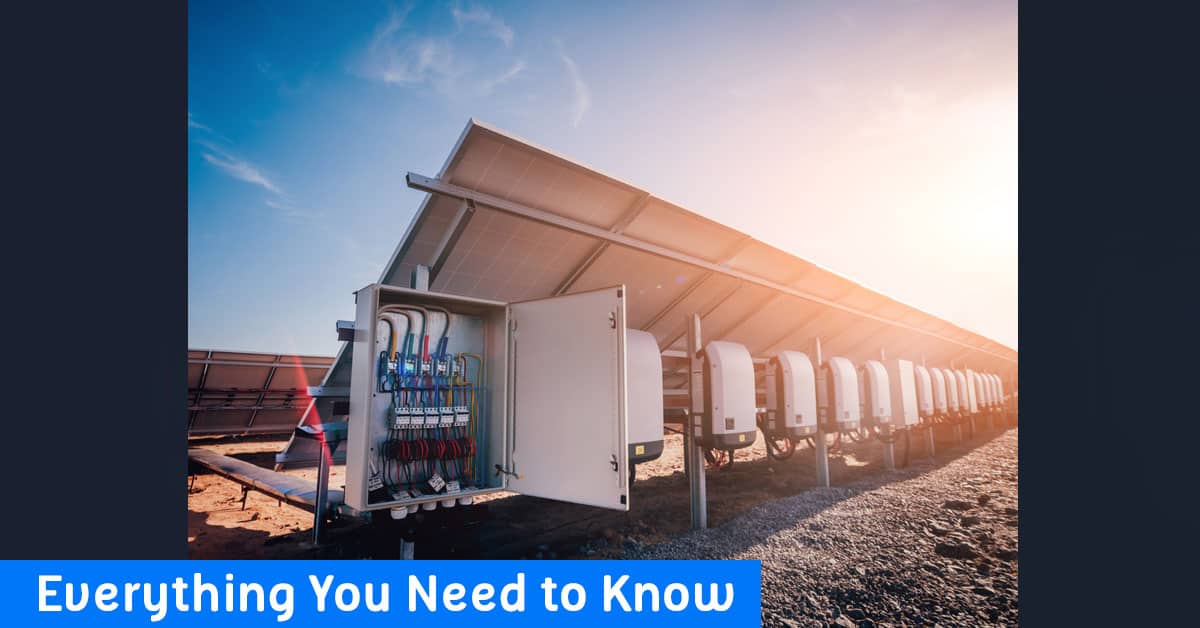How Does an Inverter Work – The Complete Guide

According to SMA Solar Technology, Solar inverter efficiency has significantly improved over the years, with many models achieving conversion efficiencies exceeding 98%. An inverter is a critical component in modern electrical systems, particularly in renewable energy setups like solar power installations. It plays a pivotal role in converting direct current (DC) from power sources such as batteries or solar panels into alternating current (AC) that can be used by standard electrical devices and the power grid. Understanding how an inverter works involves delving into the theory, principles, and various components that make this conversion possible. This comprehensive guide will explore every aspect of inverter operation to provide a clear and detailed understanding.
Contents
The Theory Behind Inverters
Direct Current (DC) vs. Alternating Current (AC)
Direct Current (DC): DC is a type of electrical current that flows consistently in one direction. It is the form of electricity produced by power sources like batteries and solar panels.
Alternating Current (AC): AC is a type of electrical current that periodically reverses direction. It is the standard form of electricity used in homes and businesses, as it is more efficient for transmitting over long distances.
The Need for Conversion
Most household appliances and electrical systems are designed to operate on AC power. However, many renewable energy systems and backup power solutions generate or store electricity in DC form. Therefore, an inverter is essential to convert DC into AC, making the power usable for standard electrical devices.
The Principles of Inverter Operation
Basic Operation
An inverter operates on the principle of electronic switching and transformation. It utilizes semiconductor devices to switch DC input rapidly, creating an AC output. This process involves several key stages:
DC to AC Conversion: The inverter converts DC power into a series of alternating pulses using electronic switches such as transistors or MOSFETs (Metal-Oxide-Semiconductor Field-Effect Transistors).
Waveform Generation: These alternating pulses are shaped into a sinusoidal waveform, which closely resembles the AC power from the grid. The quality of the waveform (pure sine wave, modified sine wave, or square wave) depends on the inverter’s design.
Voltage Transformation: The alternating pulses are passed through a transformer to step up (increase) or step down (decrease) the voltage to the desired level.
Types of Waveforms
Pure Sine Wave: This type of inverter produces a smooth and continuous waveform, identical to the AC power supplied by the grid. It is suitable for all types of electronic devices, especially sensitive ones.
Modified Sine Wave: This inverter produces a waveform that approximates a sine wave but has a stepped appearance. It is less expensive but can cause issues with sensitive electronics and produce more electrical noise.
Square Wave: The simplest and least expensive type of inverter, it produces a basic square wave. It is not suitable for most household electronics and is generally used for simpler devices.
Components of an Inverter
Inverter Circuitry
Input Stage: This stage involves filtering and stabilizing the DC input from the power source.
Inverter Bridge: Comprising semiconductor switches (such as IGBTs or MOSFETs), this bridge converts the DC input into an alternating signal.
Filter Stage: This stage smooths out the alternating pulses to produce a clean sine wave output.
Transformer: Used to adjust the output voltage to the required level.
Control Circuit: Manages the switching process, monitors input and output conditions, and provides protection against faults.
Cooling System
Inverters generate heat during operation, especially under heavy loads. Therefore, they are equipped with cooling systems, including heat sinks and fans, to dissipate heat and maintain optimal operating temperatures.
Protection Mechanisms
Modern inverters include various protection features such as:
- Overload Protection: Prevents damage from excessive load.
- Short Circuit Protection: Protects against short circuits.
- Thermal Protection: Shuts down the inverter if it overheats.
- Low Voltage Protection: Protects the battery from deep discharge.
How Inverters Work in Different Applications
Solar Power Systems
In solar power systems, inverters are crucial for converting the DC power generated by solar panels into AC power for use in homes and businesses. They also play a role in managing the flow of electricity between the solar panels, battery storage, and the grid.
Grid-Tied Systems: Inverters in grid-tied systems synchronize with the grid’s frequency and phase, allowing for seamless integration and the ability to feed excess power back into the grid.
Off-Grid Systems: These systems use inverters to provide AC power directly from solar panels and batteries, independent of the grid.
Backup Power Systems
Inverters in backup power systems, such as those used with batteries or generators, ensure that AC power is available during power outages. They switch seamlessly between the main power source and backup power, providing uninterrupted electricity.
Conclusion
Understanding how an inverter works involves appreciating the conversion process from DC to AC, the components involved, and the various applications in which inverters play a crucial role. Inverters are essential for making renewable energy systems practical and for ensuring a reliable power supply in various scenarios.
The Role of Infinite Eco Tech
Infinite Eco Tech, with over a decade of experience in renewable energy solutions, offers expert guidance and top-quality inverters tailored to meet your specific needs. Our comprehensive services ensure that you receive the best solutions for your energy requirements, backed by professional installation and ongoing support.
Investing in a quality inverter is a significant step toward achieving energy independence and reliability. By understanding the detailed workings of inverters, you can make informed decisions that optimize your energy setup. For expert advice and top-notch products, contact Infinite Eco Tech today and take the first step toward a sustainable energy future.


